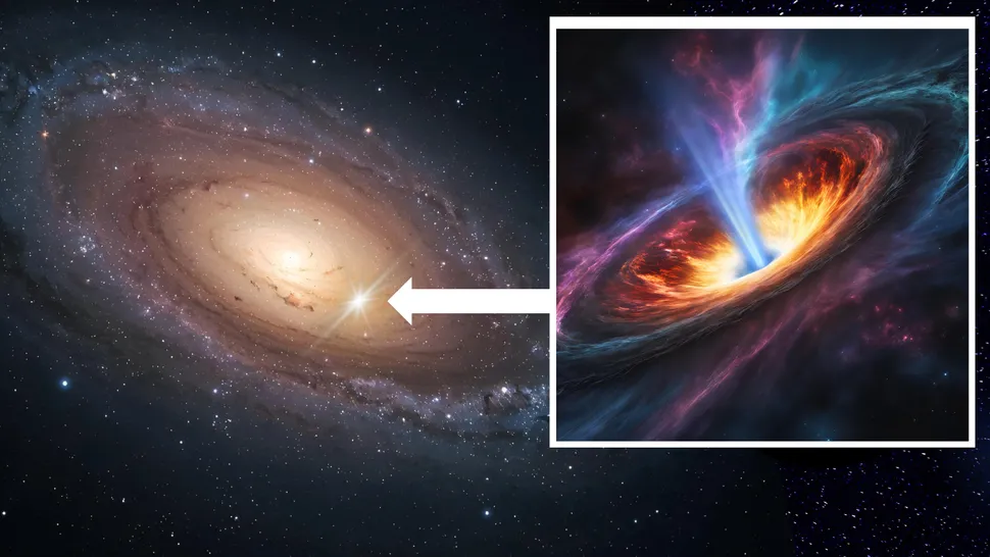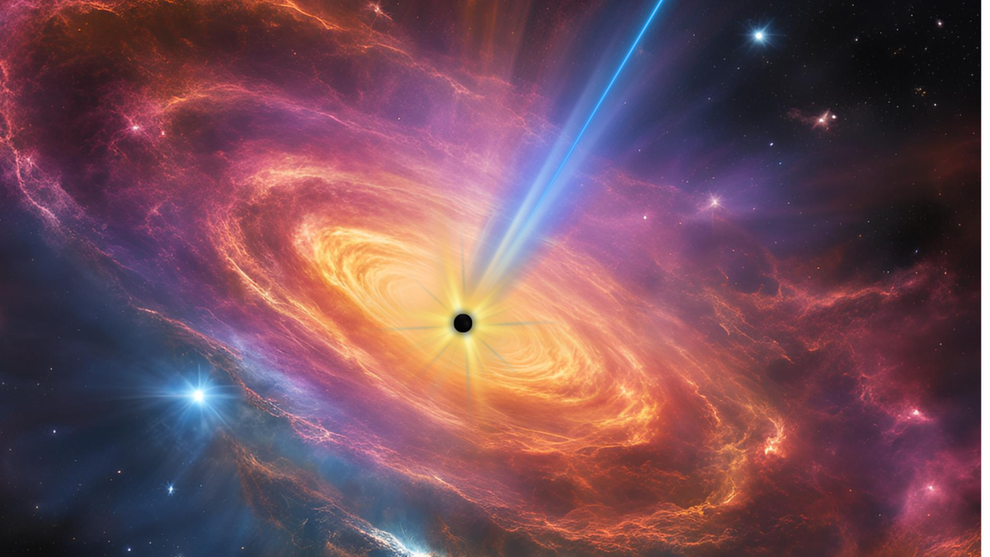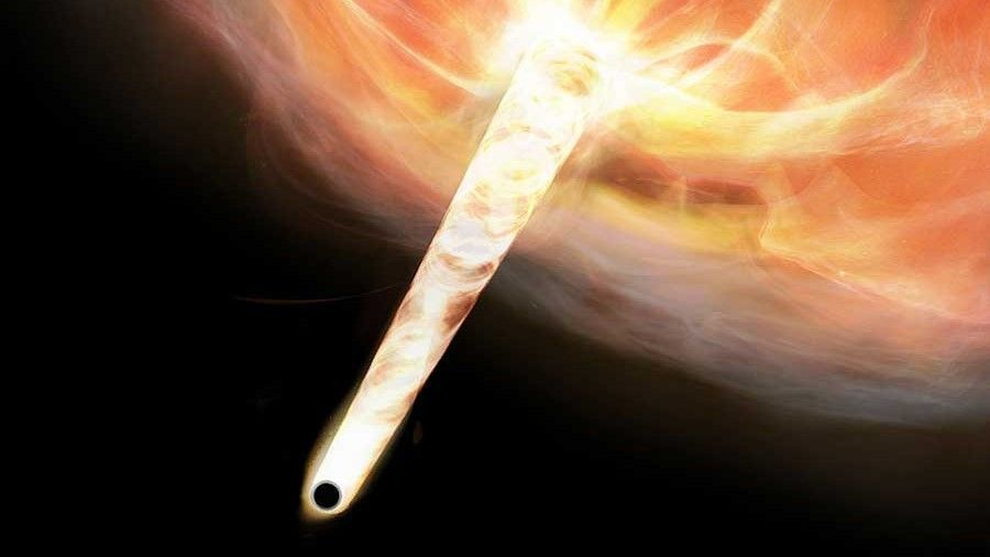
A galaxy with a "wandering" black hole is sucking in matter and moving to the edge (Photo: Space).
Black hole on the "edge" of the galaxy is still very active
A research team from the Shanghai Astronomical Observatory published in the journal Science Bulletin in September 2025: an intermediate black hole with an estimated mass of about 300,000 times the mass of the Sun, located nearly 3,000 light years from the center of the galaxy, continues to suck in matter and release powerful energy.
The galaxy containing this black hole is called MaNGA 12772-12704, a dwarf galaxy located about 230 million light years from Earth. This is the first time a case of a "non-central black hole" in a dwarf galaxy has been verified with full actual observational data.
To confirm that this was indeed a black hole, the team used data collected over 30 years (1993–2023) from the Very Large Array (VLA) radio telescope.

Supermassive black hole ejects powerful jet of matter (Photo: Space).
The results showed that the light source at this location changed in intensity - sometimes bright, sometimes dim, without any fixed rules. This is a typical sign that a black hole is present and interacting with the surrounding environment.
Not only that, this black hole also emits energy rays on a parsec scale (equivalent to about 3.26 light years).
The research team confirmed that this is a real black hole, not a "fake" object like a supernova remnant.
Suggesting solutions to the big questions in the universe
Of the more than 3,000 small galaxies surveyed, the team found only one case, the galaxy MaNGA 12772-12704, that fully met three criteria:
- Has a strong luminous core;
- Has clear energy rays emitted;
- There are light and dark changes that last for many years.

Illustration of a black hole being ejected from the center of a galaxy, followed by a trail of glowing gas (Photo: Keio University).
"This discovery forces us to rethink the co-evolution process between black holes and galaxies. Black holes are not only at the center, but can also silently reshape the host galaxy from the edges," said the project's lead researcher, from the Shanghai Astronomical Observatory.
Even though they are not located at the center of a galaxy, black holes can still have a strong impact on their surroundings. Their process of sucking in matter and emitting energy rays can affect the formation of new stars, alter the gas flow in the galaxy, and thereby affect the overall development of the galaxy itself.
In the future, with the support of new generation telescopes such as SKA (Square Kilometre Array), ngVLA (next-generation Very Large Array), or China's FAST system, astronomers expect to find many more "wandering black holes".
These black holes were once overlooked because they did not shine brightly or were too far from the galactic center to be detected. But now they may be important pieces of the puzzle to help humans better understand how the universe and galaxies evolved over billions of years.
Source: https://dantri.com.vn/khoa-hoc/phat-hien-ho-den-lang-thang-giup-giai-bai-toan-lon-cua-vu-tru-20250913054738315.htm



![[Photo] Thac Ba Lake: Towards an international-class tourism, resort and cultural center by 2040](https://vphoto.vietnam.vn/thumb/1200x675/vietnam/resource/IMAGE/2025/9/13/0b11d0413f6543bca27a358281f62e5e)

![[Photo] General Secretary To Lam attends the 80th Anniversary of the People's Court's Traditional Day](https://vphoto.vietnam.vn/thumb/1200x675/vietnam/resource/IMAGE/2025/9/13/ff42d08a51cc4673bba7c56f6a576384)

![[Photo] Launching Ceremony of the Specialized Electronic Information Page of the Communist Party of Vietnam - 14th Congress](https://vphoto.vietnam.vn/thumb/1200x675/vietnam/resource/IMAGE/2025/9/12/4c1b894be2ea4e3daccfd8c038b6fb46)































































































Comment (0)